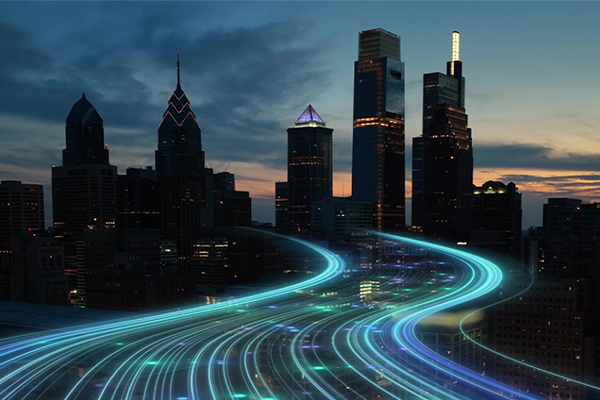The National Capital Region (NCR) is on the verge of major change thanks to the development of the Delhi-Alwar RRTS. The project which is being built by the National Capital Region Transport Corporation (NCRTC), is designed to boost the connection between Delhi and important urban spots in southern Haryana and northern Rajasthan, including Gurugram, Rewari, Bhiwadi and Alwar.
Because construction is speeding up and testing for the first phase is underway, the Delhi-Alwar RRTS is set to make a big difference in public transport and the NCR region’s growth and real estate.

What is the Delhi-Alwar RRTS?
There are just three high-speed RRTS corridors (Delhi-Alwar, Delhi-Ghaziabad-Meerut and Delhi-Panipat) being constructed as part of the initiative in India. They are designed to link NCR cities with Delhi by means of reliable, fast and energy-efficient transit. The construction of the Delhi-Alwar corridor which is 164 km long, will take place in various stages.
Currently, work and testing activities on the first section which stretches from Delhi to SNB-Shahjahanpur-Neemrana-Behror (around 106 km), are taking place. When it is fully built, the line will have 22 stations, but Phase 1 will see 16 stations added and these will include main hubs in Delhi, Gurugram and Rajasthan.
Project Status and Timeline
- Testing underway: Phase 1 testing has started at Rajiv Chowk in Gurgaon, marking a key milestone.
- Construction updates: Precast slab track installations on other corridors like the Delhi-Ghaziabad-Meerut line are complete, showing NCRTC’s construction efficiency.
- Operational date: The Delhi-Alwar RRTS, along with the Delhi-Panipat line, is expected to be operational by 2025.
- Stations: The corridor will feature elevated and underground sections, with 11 elevated and 5 underground stations in the first phase.
Multi-Modal Connectivity: Gurgaon at the Center
Even though the Delhi-Alwar RRTS is primarily about high speeds, it is also focused on easy cross-modal travel. Development plans for Cyber City and Rajiv Chowk in Gurgaon aim to make them multi-modal hubs with integration to Delhi Metro, local buses and trains transporting people within and outside Gurgaon.
This infrastructure synergy is expected to ease congestion, reduce travel times, and dramatically increase Gurgaon’s appeal as both a commercial and residential hub.
Impact on Real Estate in NCR
The RRTS project is creating a ripple effect on real estate markets across its alignment. Here’s how:
1. Increased Property Demand in Transit-Oriented Zones
Cyber City, Rajiv Chowk, Manesar, Rewari, Bhiwadi, Neemrana and Alwar are scheduled to become prime locations for real estate. Because of easier access to Delhi, these destinations will interest professionals, business people and property investors.
2. Residential Affordability
People will be able to afford housing outside Delhi while still working in the city through the corridor. Improved connectivity in Bhiwadi and Neemrana will make the popular plots and apartments there even better investments, because their ROI can rise.
3. Boost to Commercial Real Estate
Transit hubs should see the arrival of IT parks, logistics centers, shops and hotels. Commercial real estate growth is expected in the extended areas of Gurgaon and the industrial belt in Rajasthan because of RRTS.
4. Price Appreciation
Improvements in infrastructure along the corridor should lead to major increases in land and property prices. Those who invested early in SNB (Shahjahanpur-Neemrana-Behror) might achieve good capital gains over time.
Regional Growth and Economic Benefits
The Delhi-Alwar RRTS aligns with broader government goals of balanced regional development. Here’s how it supports regional growth:
- Industrial Development: The corridor passes through key industrial zones like Manesar, Dharuhera, Bhiwadi, and Neemrana, supporting both existing businesses and attracting new investments.
- Employment Generation: Real estate, infrastructure, and transport sectors are expected to create thousands of jobs.
- Tourism and Culture: Alwar, a heritage-rich city, will become more accessible to tourists, boosting the hospitality and tourism sector.
- Rural-Urban Integration: Improved connectivity will encourage migration to satellite towns, easing pressure on Delhi’s infrastructure.
Technology and Commuter Experience
The RRTS is also future-ready with state-of-the-art technologies for convenience and safety:
- High-Speed Transit: Trains will run at speeds of up to 180 km/h, cutting travel time between Delhi and Alwar to just over an hour.
- Smart Ticketing: The fare system will include QR codes and NFC-enabled payments, making commutes cashless and contactless.
- Green and Sustainable: The system promotes the use of public transport over private vehicles, reducing carbon emissions in NCR.
Government Support and Approvals
Because Haryana and Rajasthan governments have fully supported the RRTS, the process will move smoothly. The project values regional integration and economic growth which is clearly supported by the officials’ approval and cooperation.
Besides being a new transport option, the Delhi-Alwar RRTS is also helping bring change to urban areas and real estate in the NCR. By 2025, smart investors, homebuyers and companies should pay attention to this route.
Looking for cheap land, new work offices or a great suburb to settle in? No matter your choice, RRTS will expand choices for everyone in the area.




